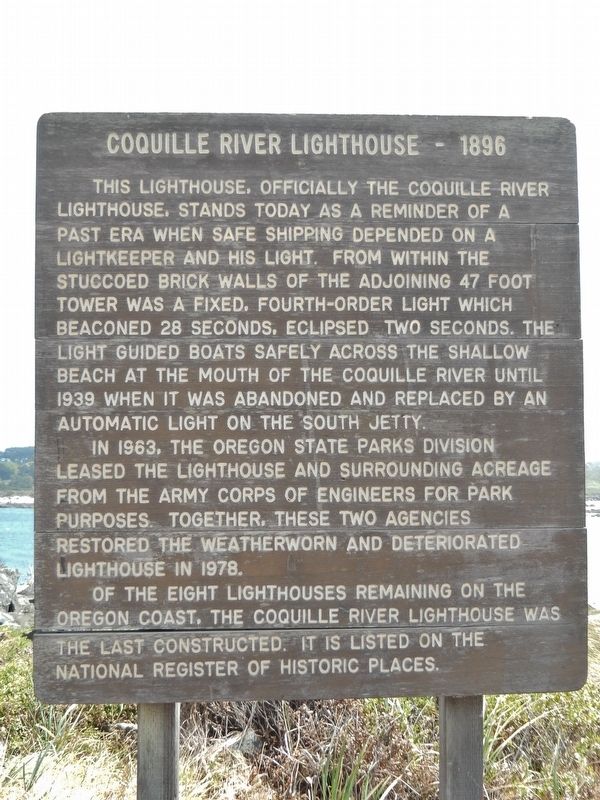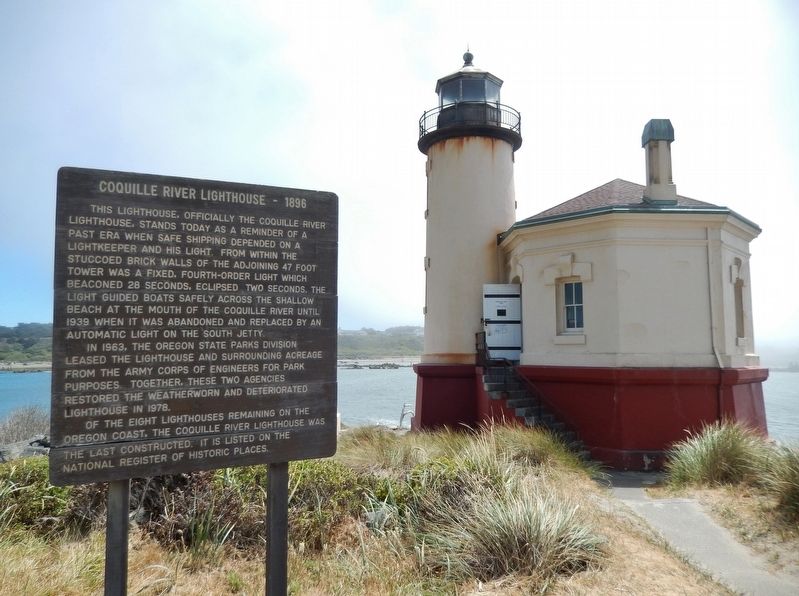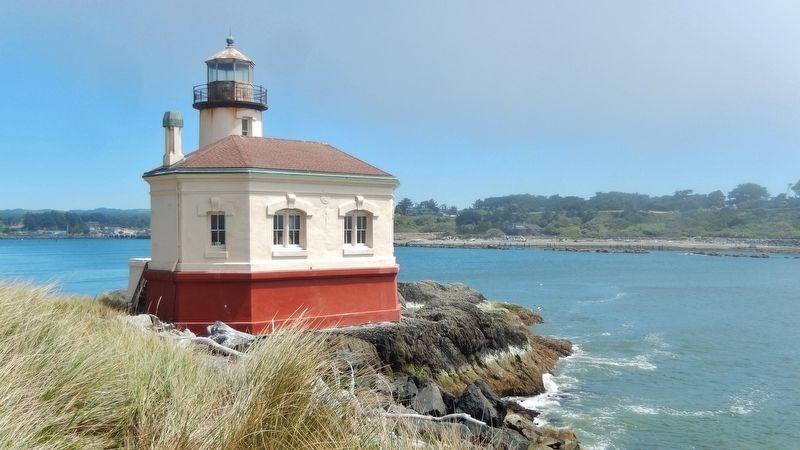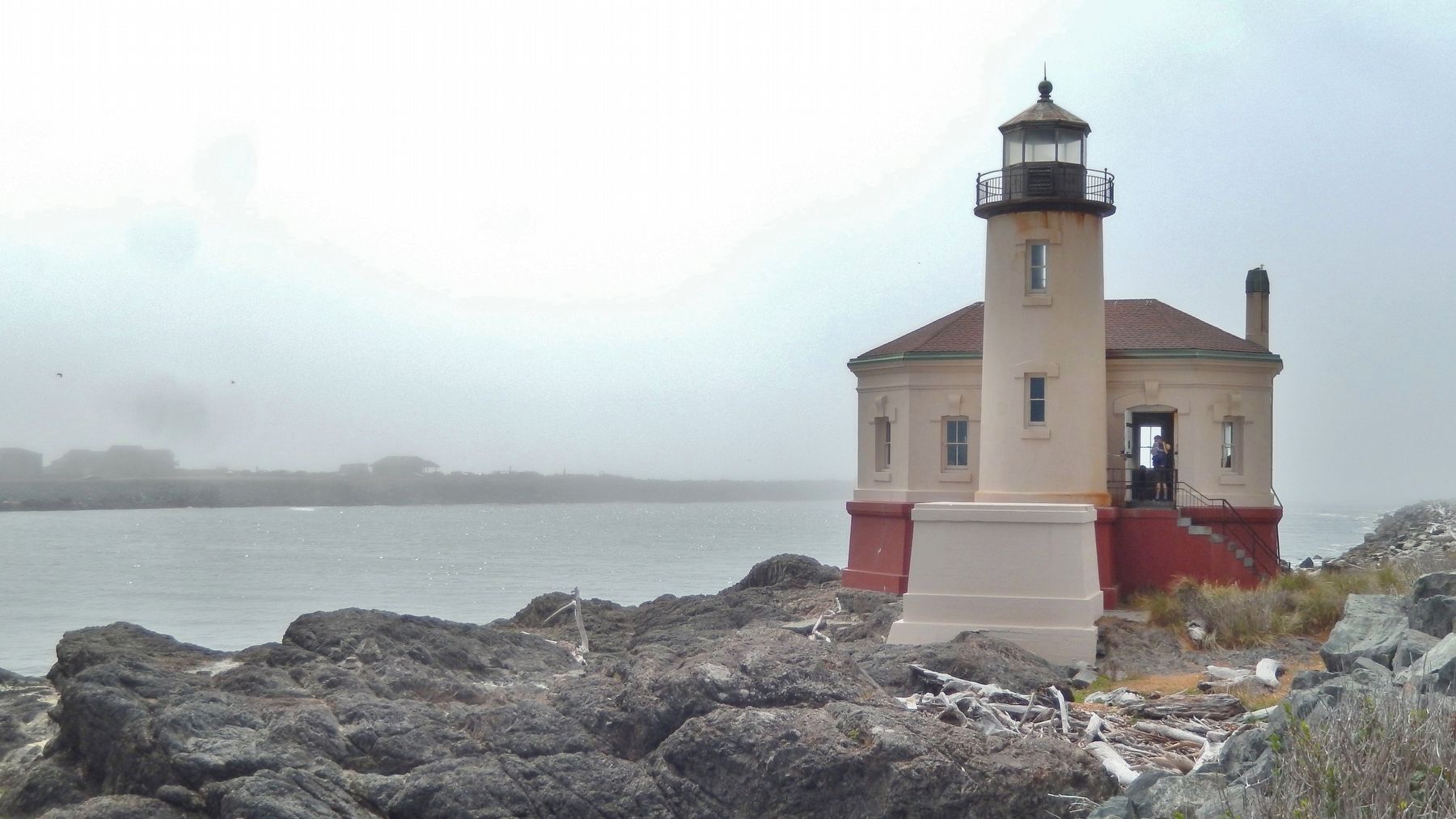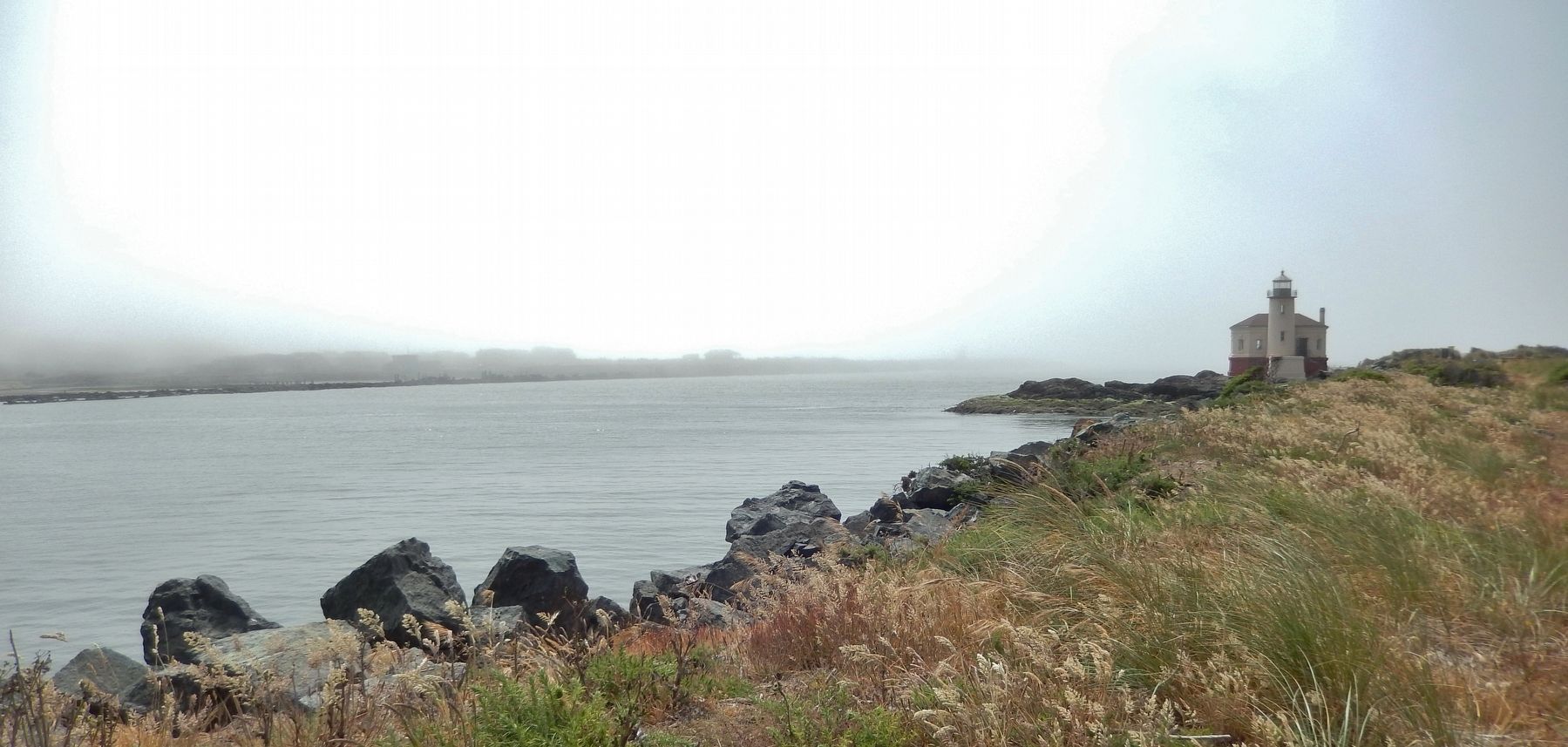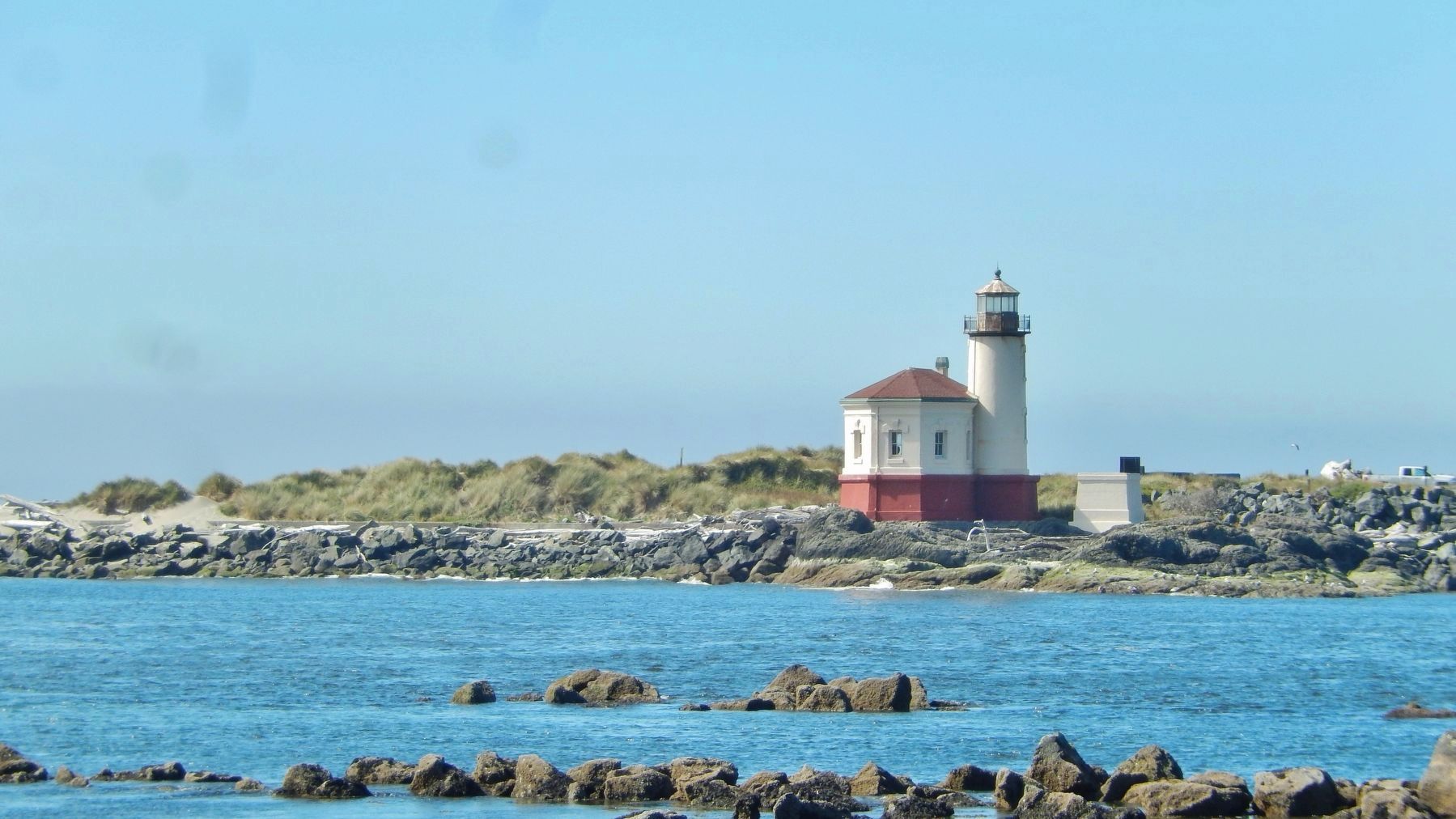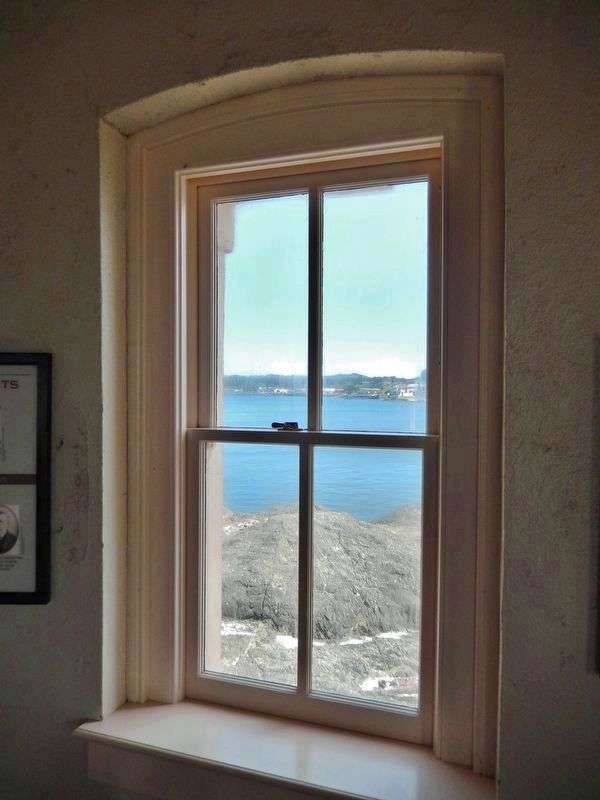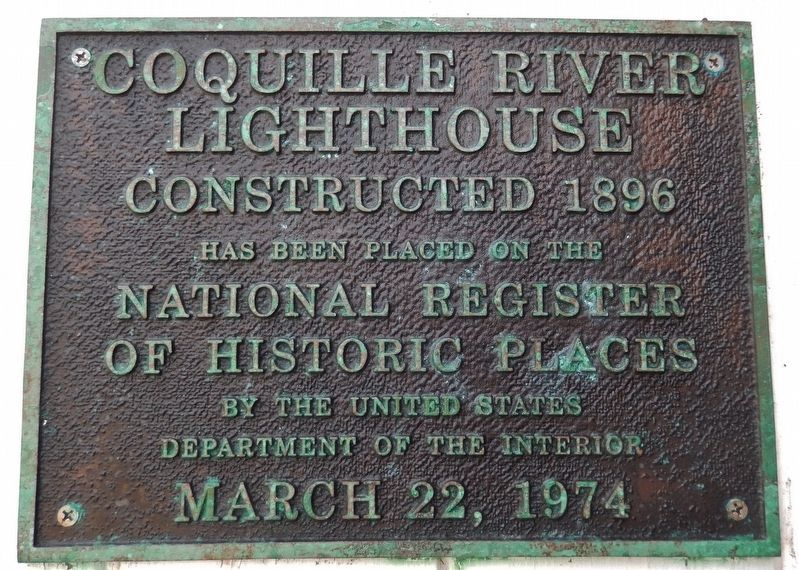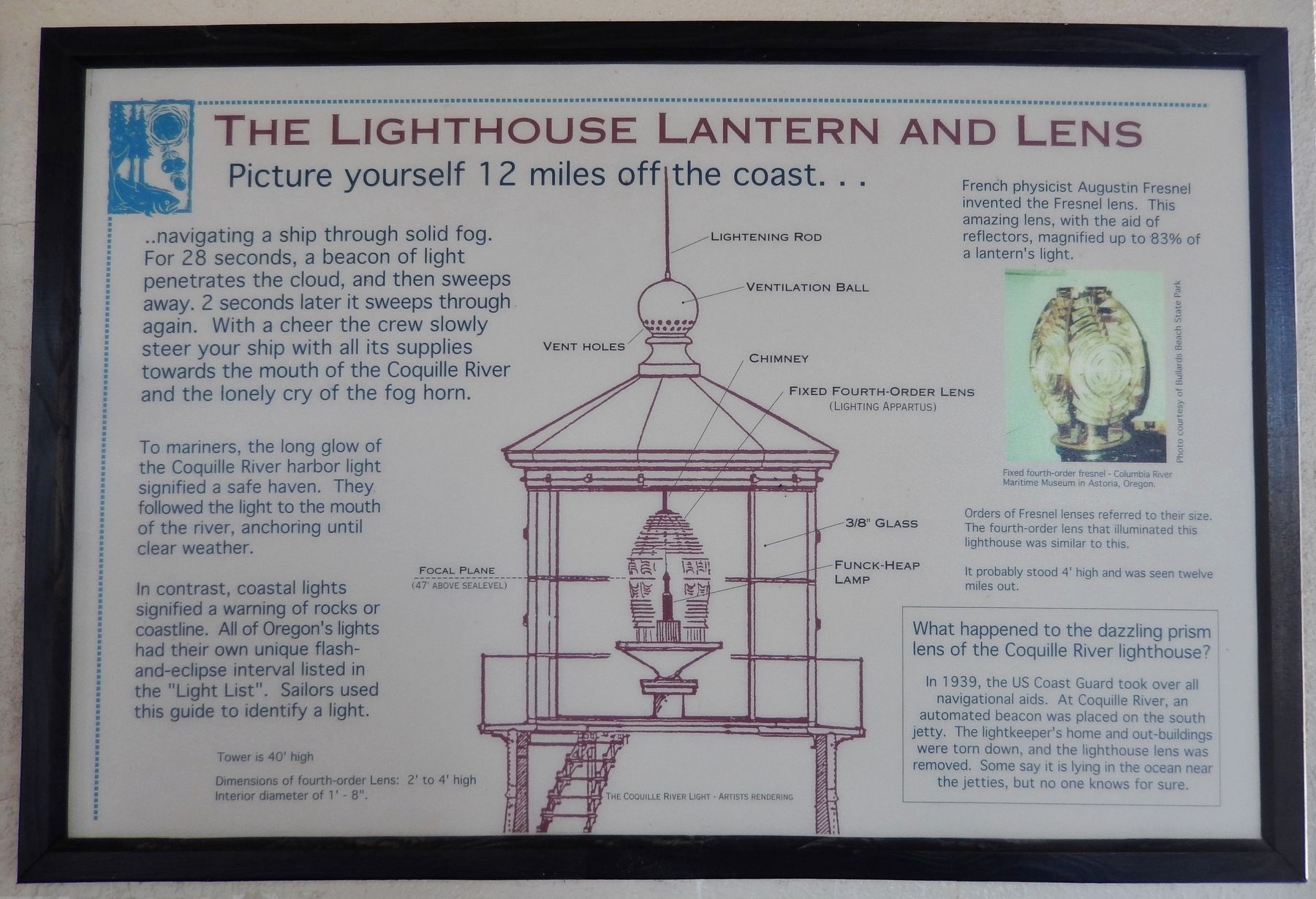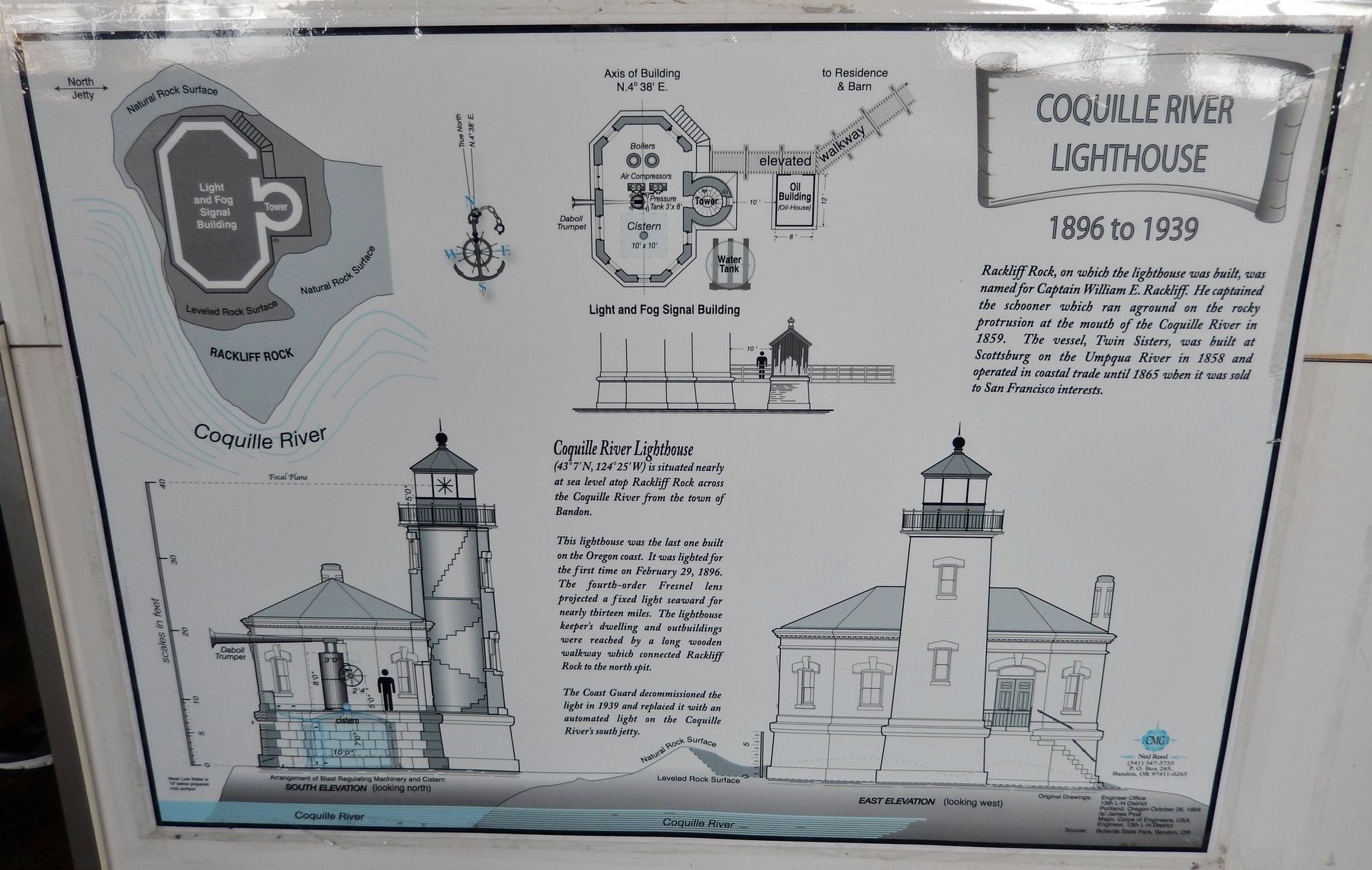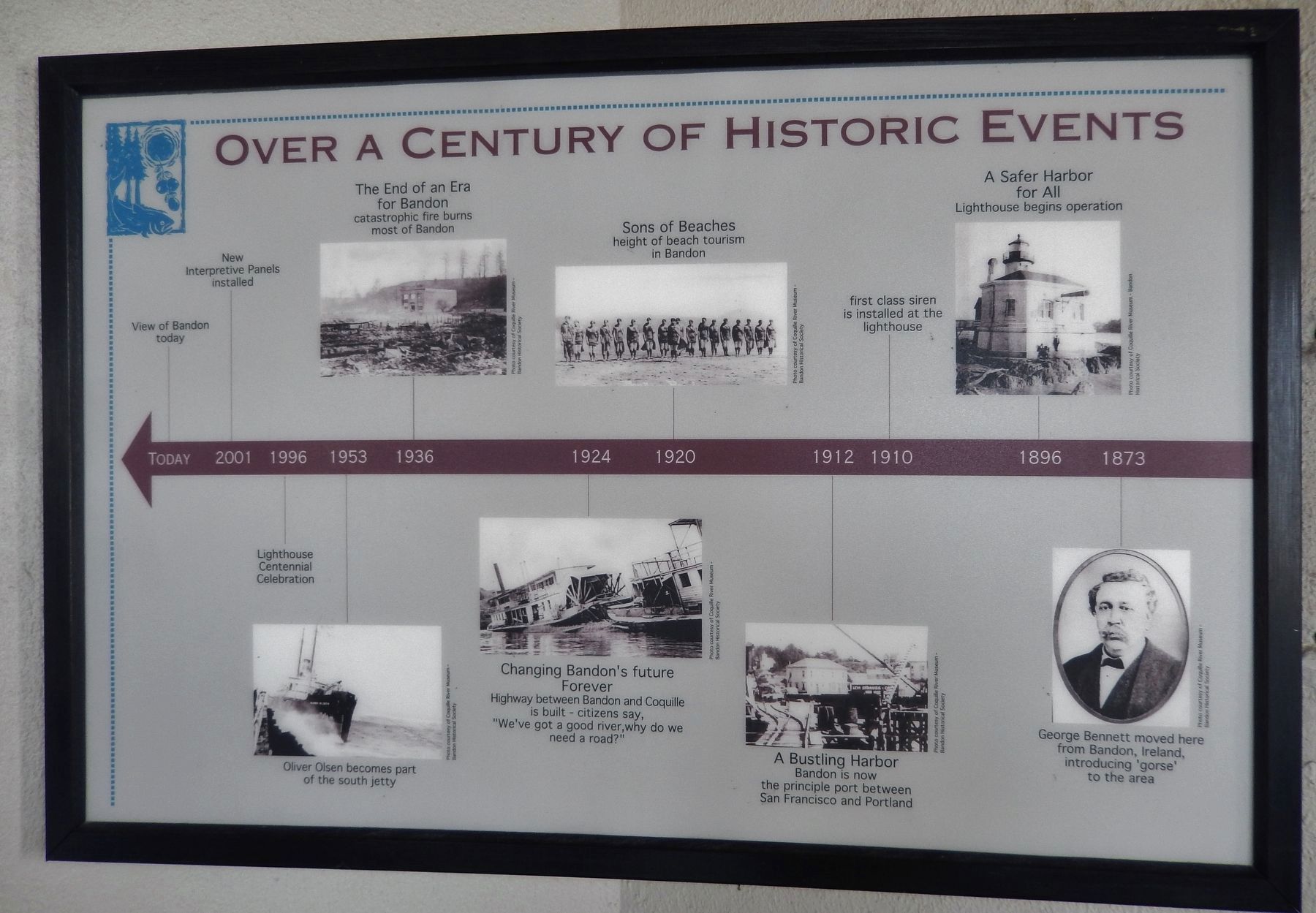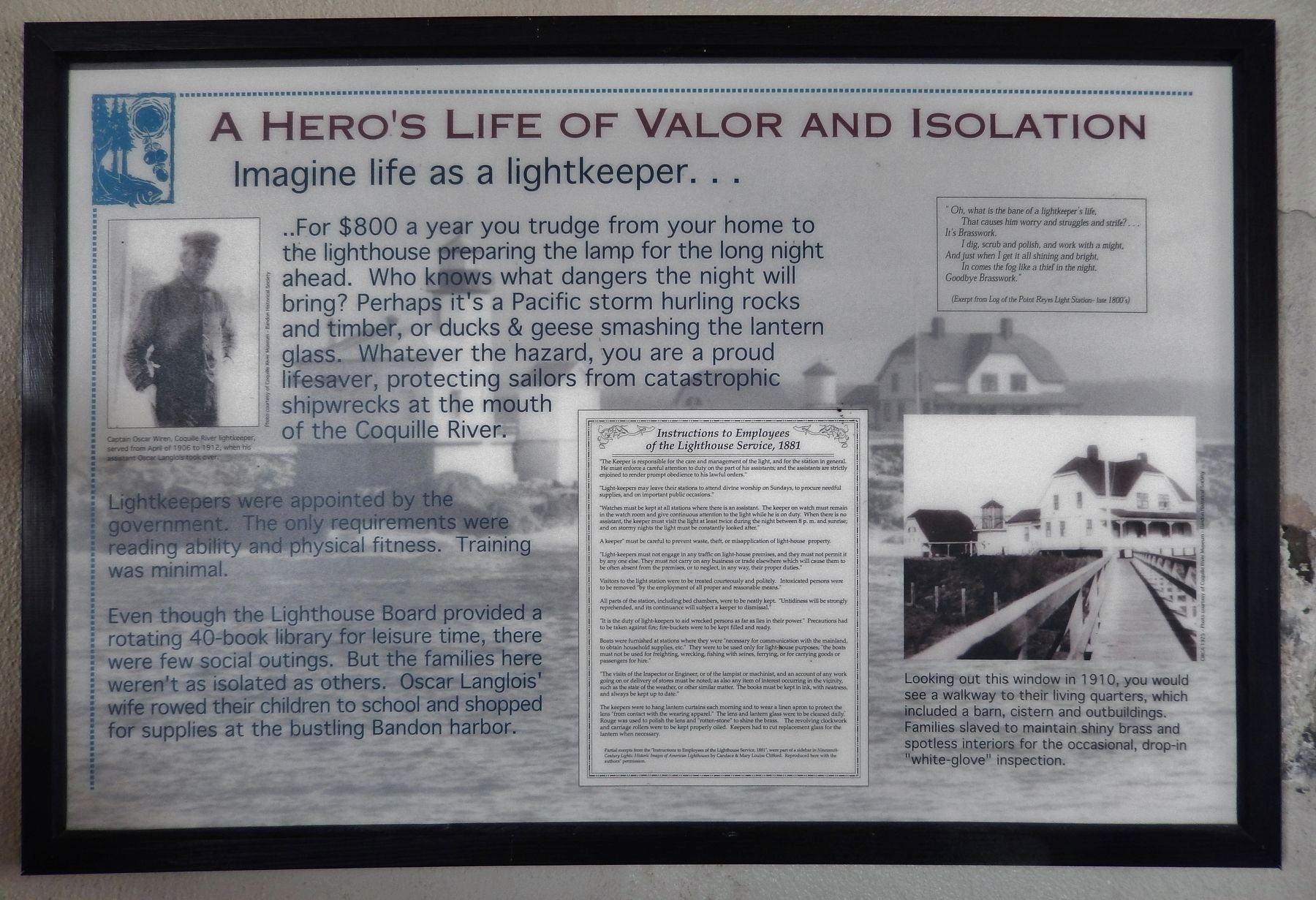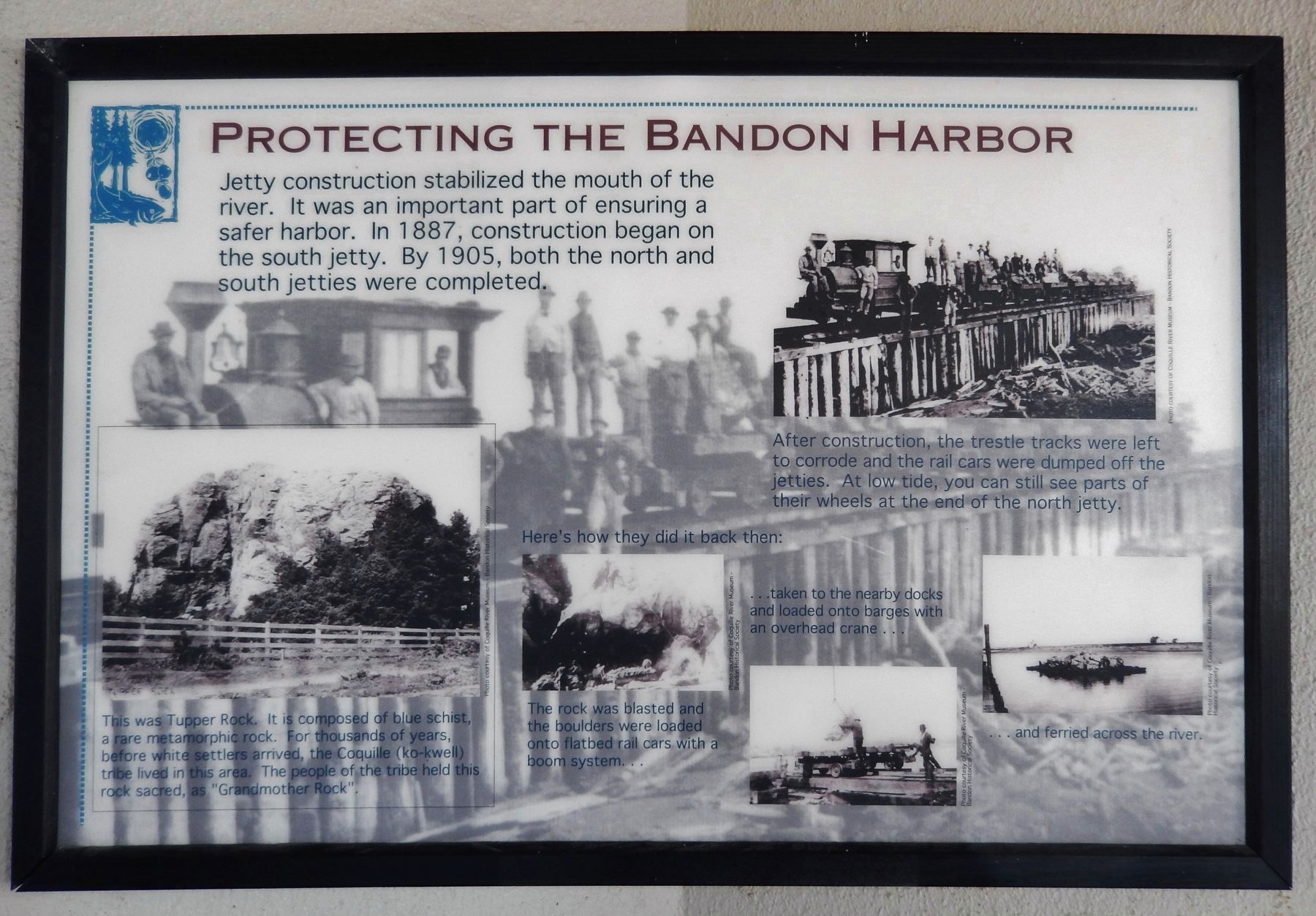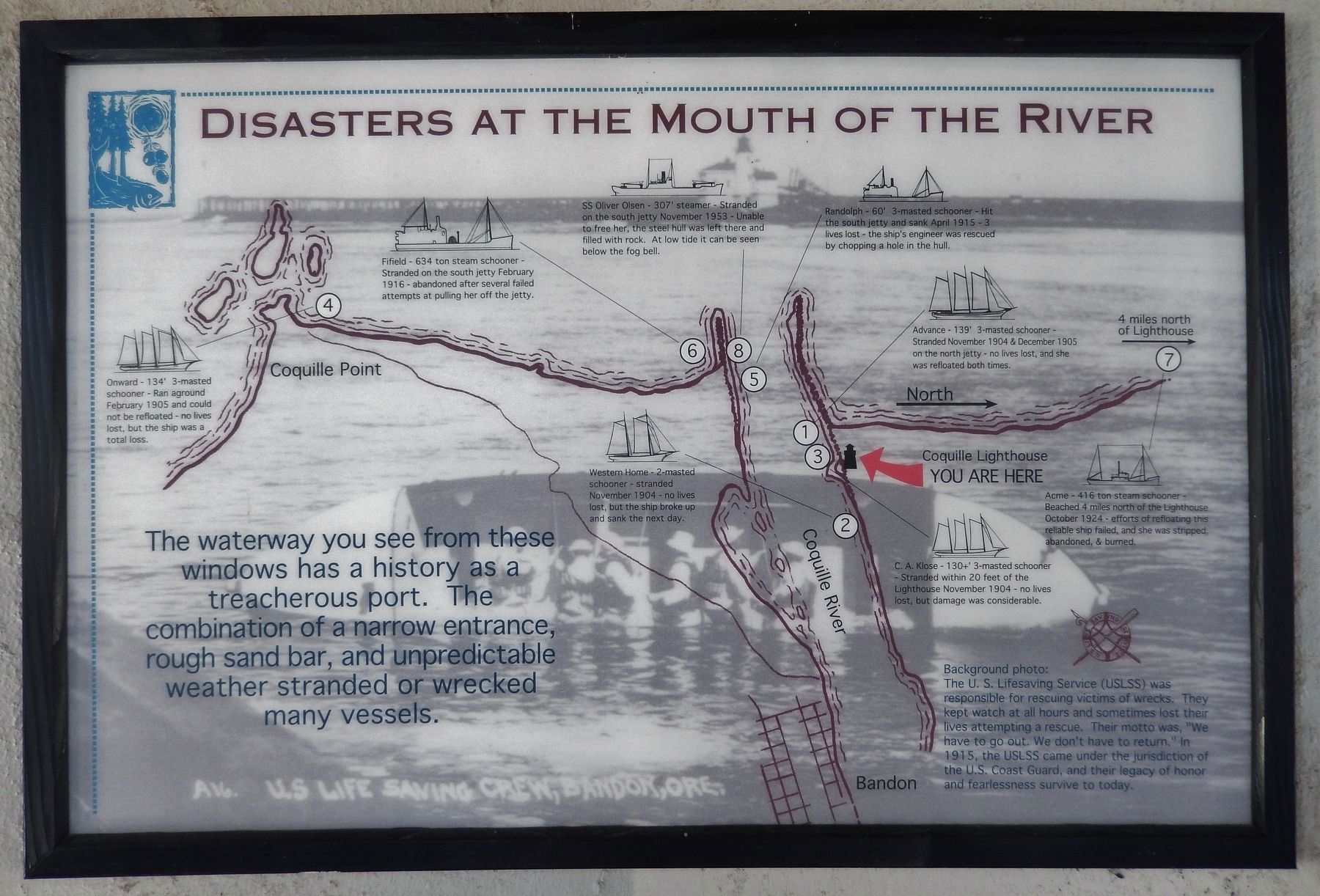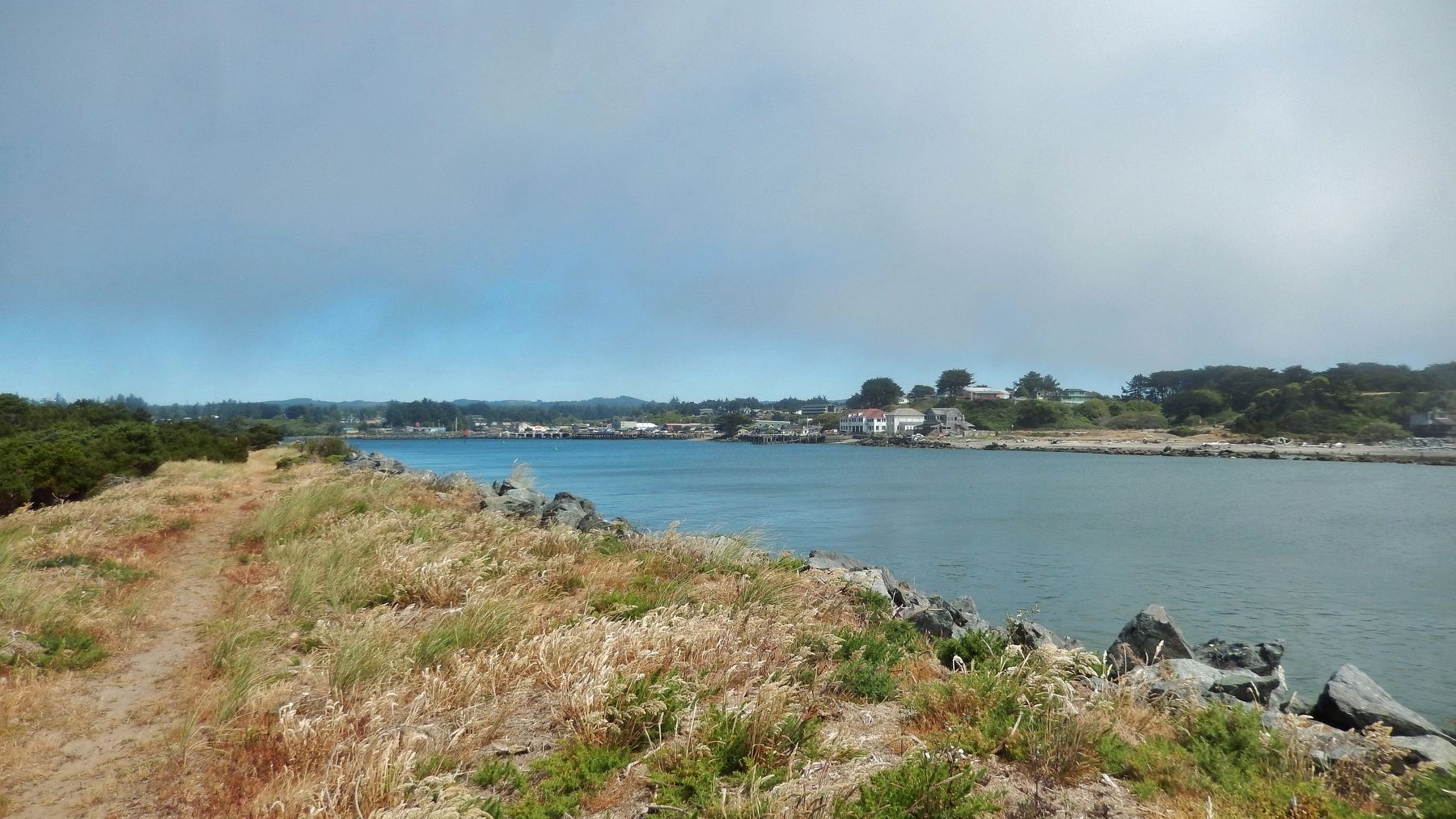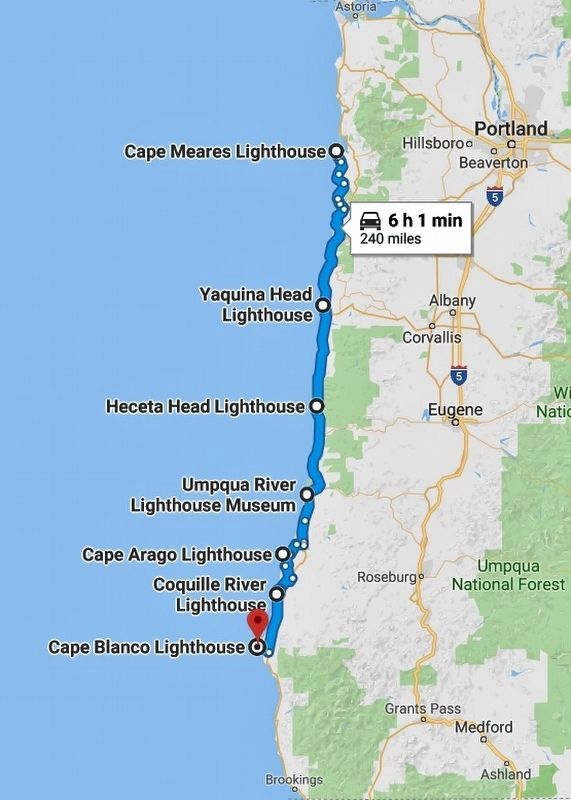Bandon in Coos County, Oregon — The American West (Northwest)
Coquille River Lighthouse - 1896
In 1963, the Oregon State Parks Division leased the lighthouse and surrounding acreage from the Army Corps of Engineers for park purposes. Together, these two agencies restored the weatherworn and deteriorated lighthouse in 1978.
Of the eight lighthouses remaining on the Oregon Coast, the Coquille River Lighthouse was the last constructed. It is listed on the National Register of Historic Places.
Topics and series. This historical marker is listed in this topic list: Notable Buildings. In addition, it is included in the Lighthouses series list. A significant historical year for this entry is 1896.
Location. 43° 7.447′ N, 124° 25.453′ W. Marker is in Bandon, Oregon, in Coos County. Marker can be reached from Bullards Beach Road, 2.8 miles east of U.S. 101 when traveling east. Marker is located adjacent to subject lighthouse, where the Coquille River empties into the Pacific Ocean, inside Bullards Beach State Park. It is a short walk from the lighthouse parking lot to the marker and lighthouse. Touch for map. Marker is at or near this postal address: 56487 Bullards Beach Road, Bandon OR 97411, United States of America. Touch for directions.
Other nearby markers. At least 4 other markers are within 14 miles of this marker, measured as the crow flies. Bandon Fire (approx. 0.7 miles away); Judah Parker County Park (approx. 4.3 miles away); Sir Francis Drake 1540-1596 (approx. 12˝ miles away); Coos Bay Waters to Coquille Waters Trail (approx. 13.7 miles away).
More about this marker. Large wooden marker, somewhat weathered
Related markers. Click here for a list of markers that are related to this marker. Oregon Coast Lighthouses
Also see . . . Coquille River (Bandon) Lighthouse.
Workers and supplies arrived on scene in April 1895, and one of the first tasks was to level the top of Rackliff Rock to provide a base for the lighthouse. Local stone was cut to form the structure’s foundation, while the lighthouse itself was built of brick, covered with a layer of stucco. The design was unique with a cylindrical tower attached to the east side of an elongated, octagonal room, which housed the fog signal equipment and had a large trumpet protruding from its western wall. The first-class Daboll fog trumpet emitted
a five-second blast every thirty seconds as needed. In 1907, oil engines powering a compressed-air plant replaced the steam plant originally used to power the fog signal. (Submitted on December 21, 2017, by Cosmos Mariner of Cape Canaveral, Florida.)
Credits. This page was last revised on April 20, 2018. It was originally submitted on December 19, 2017, by Cosmos Mariner of Cape Canaveral, Florida. This page has been viewed 285 times since then and 25 times this year. Last updated on February 9, 2018, by Cosmos Mariner of Cape Canaveral, Florida. Photos: 1, 2, 3. submitted on December 19, 2017, by Cosmos Mariner of Cape Canaveral, Florida. 4. submitted on December 21, 2017, by Cosmos Mariner of Cape Canaveral, Florida. 5, 6. submitted on December 19, 2017, by Cosmos Mariner of Cape Canaveral, Florida. 7, 8. submitted on December 21, 2017, by Cosmos Mariner of Cape Canaveral, Florida. 9, 10, 11. submitted on January 2, 2018, by Cosmos Mariner of Cape Canaveral, Florida. 12, 13, 14. submitted on January 3, 2018, by Cosmos Mariner of Cape Canaveral, Florida. 15. submitted on December 19, 2017, by Cosmos Mariner of Cape Canaveral, Florida. 16. submitted on April 8, 2018, by Cosmos Mariner of Cape Canaveral, Florida. • Andrew Ruppenstein was the editor who published this page.
